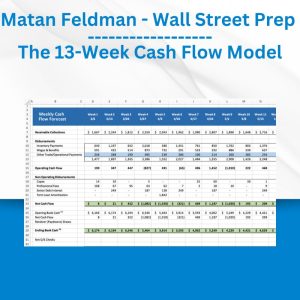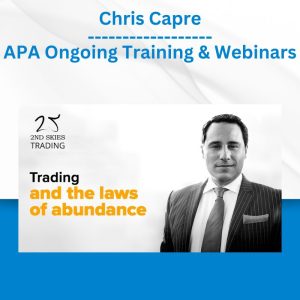*** Proof of Product ***
Exploring the Essential Features of “Centre of Excellence – Seismology Diploma Course”
What Will You Learn?
When most of us are confronted with danger, our immediate reaction is to escape it. But what if that danger is the very ground you stand upon?
Even the smallest earthquake is but an indication of massive changes occurring tens of miles below us, of incredible stress building up and tectonic plates releasing a massive amount of stored potential energy. As the ground moves and buildings begin to sway and shake, structures fall and roads split, the destructive force of an earthquake is undeniable.
Take the Seismology Diploma Course and you will build a good understanding of the formation and structure of Earth and the oceans, which will help you to understand the tectonic processes that seismology deals with. You’ll be introduced to the concepts that describe the relationship and interactions between Earth’s structures and the seismic forces acting on them that result in seismic events.
The course introduces the subject by providing you with a geological understanding of seismology before moving on to the basic concepts that define earthquakes and seismic events. You’ll build on these concepts as you progress through the course, developing your comprehension of the advanced mechanisms and source analyses vital to understanding how seismologists are able to measure and observe seismic events.
Earthquakes are a global phenomenon with an extensive history of massive destruction and catastrophic damage. You’ll learn about the damaging and hazardous aspects associated with earthquakes and the work seismologists do to gain a better understanding of them, and to hopefully prevent, or at least minimise, damage from future events.
By studying this course, you will:
- Gain a geological understanding of the Earth and its oceans
- Learn about plate tectonic mechanisms and the forces responsible for seismic activity
- Be able to determine earthquake size using seismic moment and magnitude
- Explore the location and focal mechanisms that describe shear fractures
- Learn about the work of seismologists, seismic networks, and early warning systems
- Discover history’s most damaging, deadly, and expensive earthquakes
Course Syllabus
What will I learn on the course?
Module 1: What is Seismology?
8 parts
Introduction
Part 1: Seismology
Part 2: Earth’s Formation
Part 3: The Shape of Earth
Part 4: The Oceans and Earthquakes
Test Your Knowledge
Key Learning Points Exercise
Module 1 Assessment
Module 2: The Seismic Potential of the Sea Floor
5 parts
Part 1: Sea Floor Morphology
Part 2: Seafloor Morphology Continued
Test Your Knowledge
Key Learning Points Exercise
Module 2 Assessment
Module 3: The Structure of Earth
5 parts
Part 1: Earth’s Structure
Part 2: Mantle
Test Your Knowledge
Key Learning Points Exercise
Module 3 Assessment
Module 4: Plate Tectonics
5 parts
Part 1: Isostatic Plate Equilibrium
Part 2: Subduction Zones
Test Your Knowledge
Key Learning Points Exercise
Module 4 Assessment
Module 5: Processing Earthquakes
5 parts
Part 1: Seismic Imagery
Part 2: Observation Scales
Test Your Knowledge
Key Learning Points Exercise
Module 5 Assessment
Module 6: Seismic Networks
5 parts
Part 1: Seismic Stations
Part 2: Long-Term Prediction
Test Your Knowledge
Key Learning Points Exercise
Module 6 Assessment
Module 7: Seismic Moment and Magnitude
5 parts
Part 1: Seismic Moment
Part 2: Magnitude
Test Your Knowledge
Key Learning Points Exercise
Module 7 Assessment
Module 8: Location and Focal Mechanisms
6 parts
Part 1: Earthquake Location
Part 2: Focal Mechanisms
Part 3: Fault Planes
Test Your Knowledge
Key Learning Points Exercise
Module 8 Assessment
Module 9: Real Time Seismology
6 parts
Part 1: What is Real Time?
Part 2: Extended Source Directivity
Part 3: Extended Source Rupture Dimensions
Test Your Knowledge
Key Learning Points Exercise
Module 9 Assessment
Module 10: Earthquake Warning Systems
7 parts
Part 1: Early Warning Systems
Part 2: EWS Technologies
Part 3: Data Time Synchronisation
Part 4: Global Warning Systems
Test Your Knowledge
Key Learning Points Exercise
Module 10 Assessment
Module 11: History of Earthquakes
10 parts
Part 1: Recap of Earthquake Hazard Potential
Part 2: Largest Earthquakes
Part 3: Deadliest Earthquakes
Part 4: Most Expensive Earthquakes
Part 5: Tsunamis Caused by Earthquakes
Part 6: Recent Events
Test Your Knowledge
Key Learning Points Exercise
Module 11 Assessment
Conclusion
Who Would Benefit from This Course?
The Seismology Diploma Course is an introduction to this ever-expanding geological science. Whether you are new to the subject and would like a beginner-friendly introduction or have a fascination with earth sciences and some foundational knowledge, this course will guide you through the process of earthquake formation and the work of seismologists.
Please see the full list of alternative group-buy courses available here: https://lunacourse.com/shop/









